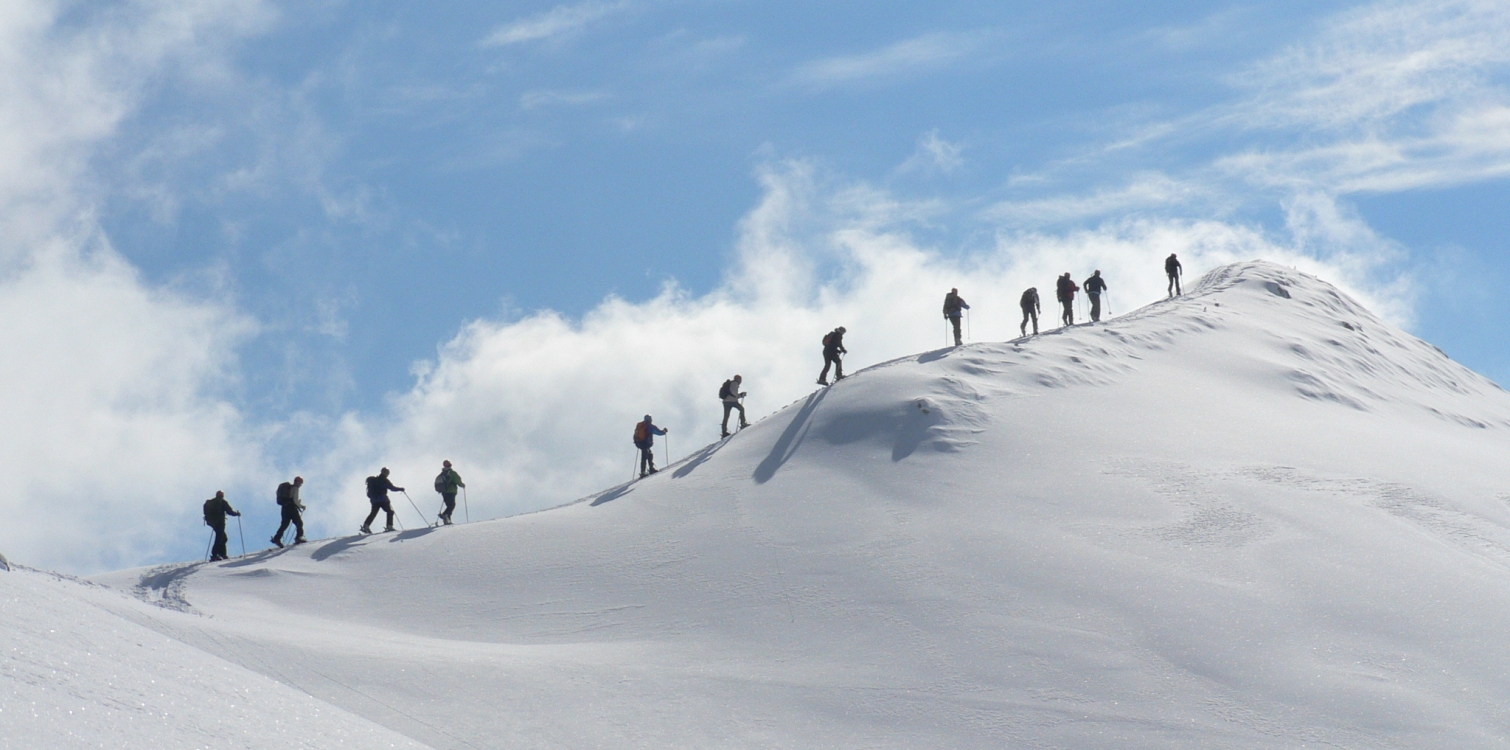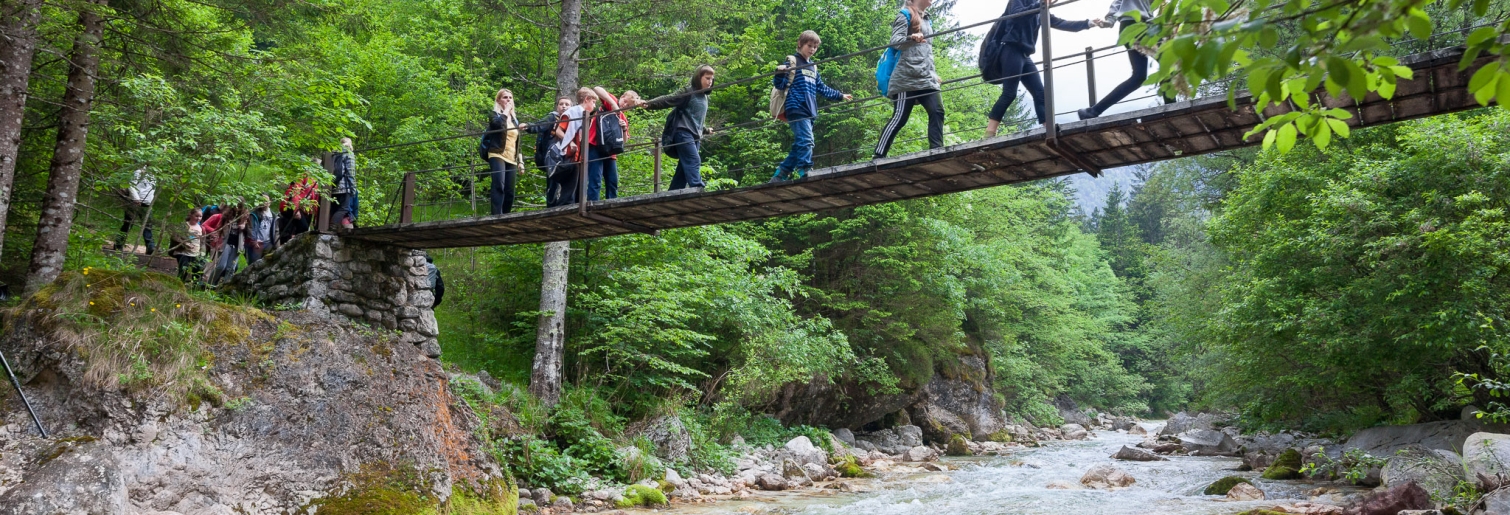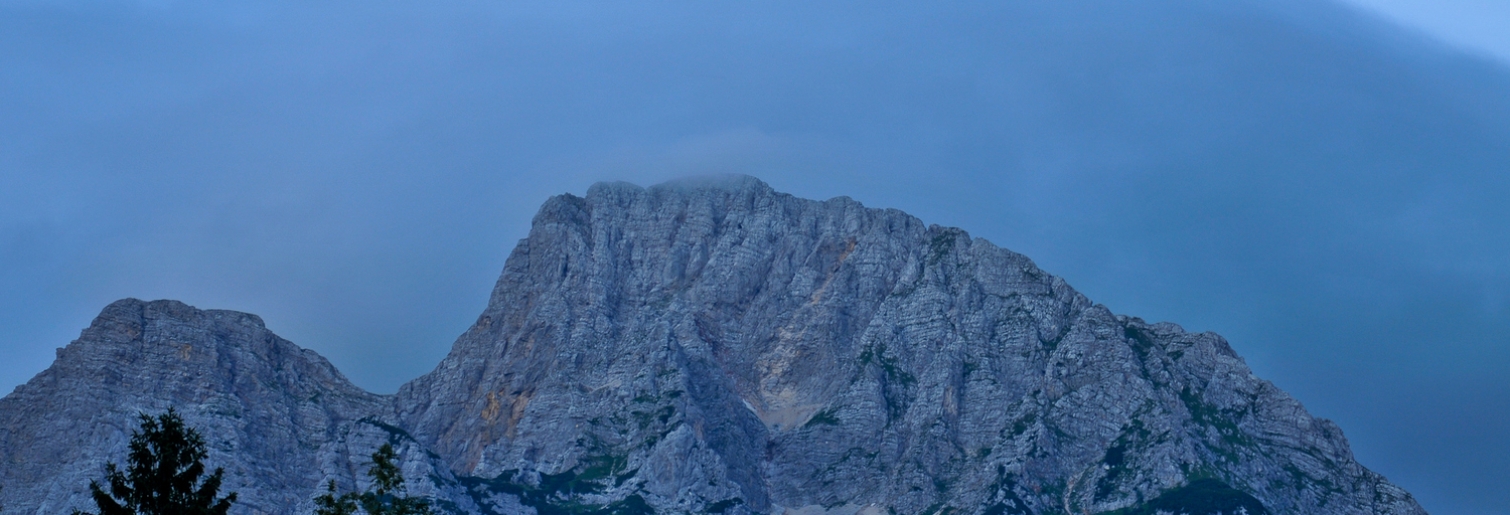Mountains in Slovenia
You should be well equipped and well prepared when you head to the mountains. On the website you can find are some recommendations you should follow for a safe trip to the mountains to make planning your alpine and hiking tours easier.

Certainly, many images of the Slovenian mountains capture the breathtaking beauty you'd love to share with the world. However, it is crucial to prioritize safety, fitness, and careful planning before embarking on your journey. An old Slovenian saying wisely states, "The mountain isn't crazy, the person climbing it is." This especially applies to those who are not adequately equipped and thus unprepared. Numerous hazards in the mountains can transform a wonderful experience of communing with nature into an ordeal, leading to suffering, injury, or worse.
That’s why you should set out into the mountains with a great deal of respect and cautiousness, while being appropriately equipped, healthy and physically fit.
Before you go to the mountains
Tell someone in the valley where you are going, what your destinations are and when you plan to return.
Write in the summit log books, as this can be useful to mountain rescuers in case they need to look for you.
Book your accommodation in a mountain hut in advance. If you are not going on the hike, cancel your reservation.
Map of mountain huts
Choosing a trail
Choose trails suited to your psycho-physical abilities, knowledge and experience, and adapt to the weakest participant on the tour.
A route plan is the first step towards safer mountain visits. Walking on 'spur of the moment' is discouraged.
DON'T GO OFF-TRAIL! If you get lost, retrace your steps and look for the signpost.
DO NOT continue into the unknown!
The Knafelč sign marks mountain trails in Slovenia:

Mountain trails are classified according to difficulty as:
 Easy trails
Easy trails
They are suitable for walking with trekking poles and do not require the use of your hands.
 Difficult trails
Difficult trails
There are parts where you need to use your hands to help yourself. Steel cables and other equipment to increase safety are on the trail. The use of a helmet is recommended.
 Very difficult trails
Very difficult trails
Use our hands to move forward is mandatory. Steel cables, iron pegs, and other equpment are on the trail to facilitate upward movement. The use of a helmet, climbing harness and self-protection kit is recommended.
Conditions and notices
Check the condition of the trails before you go into the mountains.
You can check the status of the trail at:
Always check the weather forecast before you go to the mountains. Weather conditions in the mountains are very variable and extreme, even in summer.
Temperatures can change quickly, especially at higher altitudes. Even in the summer months we can be surprised by very low temperatures, especially at night. Make sure you have enough warm clothes with you.
In the summer months, afternoon thunderstorms are common in mountainous areas. Plan your trips so that you return to the valley before the afternoon, when storms are most likely. Watch out for approaching storm clouds 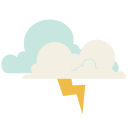
Overview of mountain and other trails in the park - potiPZS
Equipment in the mountains
We go to the mountains wearing quality soled mountaineering boots, semi-high or high, to protect our ankles.
Sandals, trainers and other lighter footwear can cause accidents!
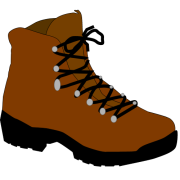
Whether walking, running or cycling, mountain equipment should always be in your rucksack:
- personal first aid kit
- head torch and spare batteries
- an aluminium foil or large black bag or bivy sack (for thermal protection in case of an accident or unplanned bivouacking)
- mobile phone with full battery
- mountain map and compass
- iron food (food with high energy value and long shelf life)
- sufficient amount of water
What to do in case of an accident?
Members of the Mountain Rescue Association of Slovenia (GRS) rescue in the Slovenian mountains.
In case of an accident, call 112 or send a text message.
Communicate:
- WHO is calling
- WHAT happened and WHERE
- WHEN it happened
- HOW MANY casualties
- WHAT are the casualties
- WHAT help do you need
Try to remain calm. This will also help to calm other participants. Assess the situation and protect YOURSELF and the INJURED PERSON from immediate dangers. Provide first aid within the limits of your knowledge and ability.
Only use the helicopter emergency signal if there are no rescuers in the vicinity of the accident!
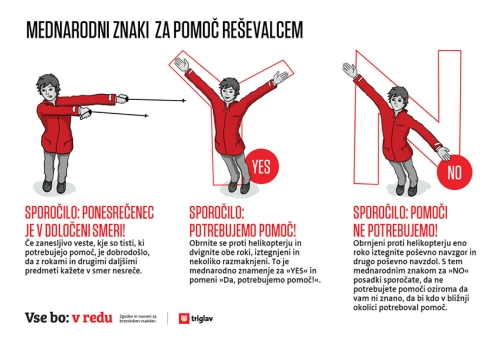
Source: Zavarovalnica Triglav, Vse bo: v redu
1st picture: MESSAGE: The injured person is in this specific direction. You can do that if you definetly know, where the injured person is located.
2nd picture: MESSAGE: We need help.
3rd picture: MESSAGE: We don't need help.
What to do when we get caught in a lightning storm?
There is no protection against lightning; prevention is the main defence. We head for the mountains early so that we can be in the valley or in the hut during afternoon thunderstorms. If we are caught in a storm, we should get away from exposed places, especially by the rocks or red rock. Remove metal objects!
Sit on a rope or backpack, take off your helmet with its metal parts and stay as low as possible. Avoid exposed objects and wet ravines and watercourses. We are safest on scree, sitting on a backpack. When descending, keep at least 20 metres between individuals.
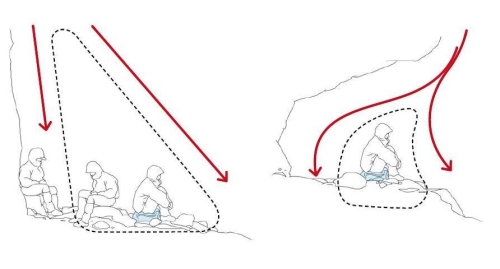
Source: Petzl
The saftey tips were made with the help of Mountain association of Slovenia materials :
Odbor za usposabljanje in preventivo Planinske zveze Slovenije, Matjaž Šerkezi, strokovni sodelavec, junij 2019
Thank you.

